Leader of the Conservative Party (UK)
| Leader of the Conservative Party | |
|---|---|
|
| |
| Inaugural holder |
Robert Peel (de facto) Andrew Bonar Law (de jure) |
| Formation |
1834 (de facto) 1922 (de jure) |
The Leader of the Conservative Party is the most senior politician within the Conservative Party in the United Kingdom. The post is currently held by Theresa May, who succeeded David Cameron on 11 July 2016.
Background
The foundation of the Conservative Party is conventionally dated to the Tamworth Manifesto delivered on 18 December 1834 by Sir Robert Peel.
Until 1922, there was no formal "Leader of the Conservative Party". There was a leader of the Conservative party in each of the two Houses, and they were regarded as equal unless one of them was either the Prime Minister or a former Prime Minister, or if a particular crisis (as in 1846–1847 or 1916) had resulted in one clearly asserting authority over the other. In the periods when this was not the case (1881–1885, 1911–1916, 1921–1922) there was no clear "Leader of the Conservative Party" – this contributed to some of the internal party conflict at the time. The distinction of the leaders is often overlooked by many and there are lists in circulation that assume the eventual single leader who emerged after a period of equal leadership was the leader from the outset. However this was not always the case – for example in 1881 it was widely expected that the Commons leader Sir Stafford Northcote would be the next Conservative Prime Minister, but by the time the party had returned to government in 1885 political developments had resulted in the Lords leader Robert Gascoyne-Cecil, 3rd Marquess of Salisbury having the stronger claim for the premiership.
When the Parliament Act 1911 reduced the power of the Lords, it seemed likely that the leader in the Commons would be preeminent. But that was not formally recognised for another eleven years, and there were several occasions when members of the Lords were strongly considered for the leadership of the whole party after this time. Since 1922 an overall leader has been formally elected by a joint meeting of MPs, peers, and prospective parliamentary candidates, even when the party is in opposition. Until 1965 this election was a rubber-stamp for the individual who had already been asked by the monarch to form a government; the leadership did not fall vacant at any time when the party was in opposition during this period. Since 1965 a succession of ballots have been held to choose between competing candidates. This was instigated by Alec Douglas-Home in 1964 after the confused circumstances of his own elevation in 1963.
Overall leader of the Conservative Party: 1834–1922
| Overall leader (Birth–Death) |
Portrait | Country of birth | Constituency / Title | Took office | Left office | Prime Minister (term) | |
|---|---|---|---|---|---|---|---|
| Sir Robert Peel (1788–1850) |
 |
Tamworth | 18 December 1834[1] |
29 June 1846 |
himself 1834–35 | ||
| Melbourne 1835–41 | |||||||
| himself 1841–46 | |||||||
| Edward Smith-Stanley 14th Earl of Derby from 1851 (1799–1869) |
 |
Baron Stanley until 1851 Earl of Derby from 1851 |
29 June 1846 |
27 February 1868 |
Russell 1846–52 | ||
| himself 1852 | |||||||
| Aberdeen 1852–55 | |||||||
| Palmerston 1855–58 | |||||||
| himself 1858–59 | |||||||
| Palmerston 1859–65 | |||||||
| Russell 1865–66 | |||||||
| himself 1866–68 | |||||||
| Benjamin Disraeli 1st Earl of Beaconsfield from 1876 (1804–1881) |
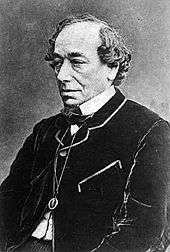 |
Buckinghamshire until 1876 Earl of Beaconsfield from 1876 |
27 February 1868 |
19 April 1881 |
himself 1868 | ||
| Gladstone 1868–74 | |||||||
| himself 1874–80 | |||||||
| Gladstone 1880–85 | |||||||
| Vacant Leader of the Lords – 3rd Marquess of Salisbury Leader of the Commons – Stafford Northcote |
19 April 1881 |
23 June 1885 | |||||
| Robert Gascoyne-Cecil 3rd Marquess of Salisbury (1830–1903) |
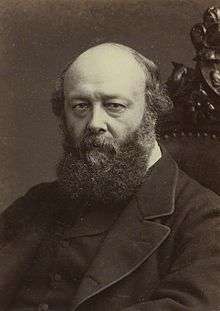 |
Marquess of Salisbury | 23 June 1885 |
11 July 1902 |
himself 1885–86 | ||
| Gladstone 1886 | |||||||
| himself 1886–92 | |||||||
| Gladstone 1892–94 | |||||||
| Rosebery 1894–95 | |||||||
| himself 1895–1902 | |||||||
| Arthur Balfour (1848–1930) |
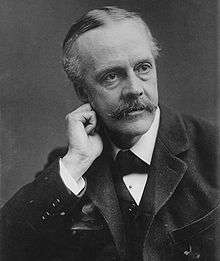 |
Manchester East until 1906 City of London from 1906 |
11 July 1902 |
13 November 1911 |
himself 1902–05 | ||
| C.-Bannerman 1905–08 | |||||||
| Asquith 1908–16 | |||||||
| Vacant Leader of the Lords – 5th Marquess of Lansdowne Leader of the Commons – Andrew Bonar Law |
13 November 1911 |
10 December 1916[2] |
|||||
| Andrew Bonar Law (1858–1923) |
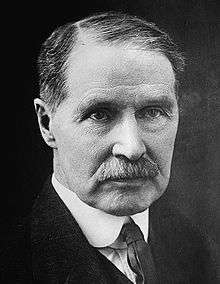 |
New Brunswick, |
Bootle until 1918 Glasgow Central from 1918 |
10 December 1916[3] |
21 March 1921 |
Lloyd George 1916–22 | |
| Austen Chamberlain (1863–1937) |
 |
|
Birmingham West | 21 March 1921 |
23 October 1922 | ||
Leader of the Conservative Party (1922–)
| Leader (Birth–Death) |
Portrait | Country of birth | Constituency / Title | Took office | Left office | Prime Minister (term) | |
|---|---|---|---|---|---|---|---|
| Andrew Bonar Law (1858–1923) |
 |
New Brunswick, |
Glasgow Central | 23 October 1922 (Party meeting) |
28 May 1923 |
himself | |
| Stanley Baldwin (1867–1947) |
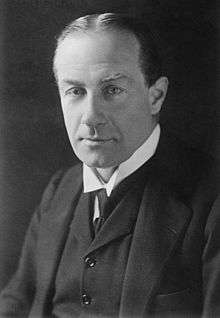 |
Bewdley | 28 May 1923 (Party meeting) |
31 May 1937 |
himself 1923–24 | ||
| MacDonald 1924 | |||||||
| himself 1924–29 | |||||||
| MacDonald 1929–35 | |||||||
| himself 1935–37 | |||||||
| Neville Chamberlain (1869–1940) |
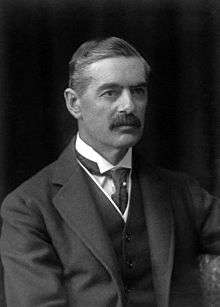 |
Birmingham Edgbaston | 31 May 1937 (Party meeting) |
9 October 1940 | |||
| himself 1937–40 | |||||||
| Churchill May–Oct.1940 | |||||||
| Winston Churchill (1874–1965) |
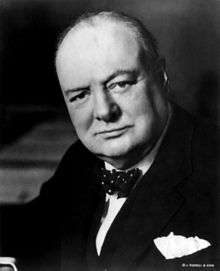 |
Epping until 1945 Woodford from 1945 |
9 October 1940 (Party meeting) |
21 April 1955 |
himself 1940–45 | ||
| Attlee 1945–51 | |||||||
| himself 1951–55 | |||||||
| Anthony Eden (1897–1977) |
 |
|
Warwick and Leamington | 21 April 1955 (Party meeting) |
22 January 1957 |
himself | |
| Harold Macmillan (1894–1986) |
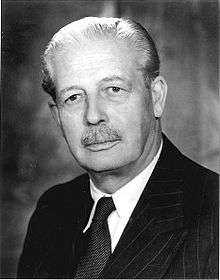 |
|
Bromley | 22 January 1957 (Party meeting) |
11 November 1963 |
himself | |
| Alec Douglas-Home (1903–1995) |
.jpg) |
Earl of Home until 1963 Kinross and Western Perthshire from 1963 |
11 November 1963 (Party meeting) |
27 July 1965 |
himself 1963–64 | ||
| Wilson 1964–70 | |||||||
| Edward Heath (1916–2005) |
Bexley until 1974 Sidcup from 1974 |
27 July 1965 (Elected) |
11 February 1975 | ||||
| himself 1970–74 | |||||||
| Wilson 1974–76 | |||||||
| Margaret Thatcher (1925–2013) |
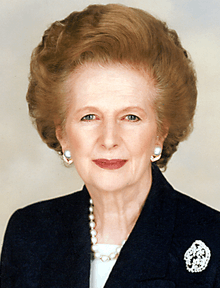 |
Finchley | 11 February 1975 (Elected) |
28 November 1990 | |||
| Callaghan 1976–79 | |||||||
| herself 1979–90 | |||||||
| John Major (1943–) |
 |
|
Huntingdon | 28 November 1990 (Unopposed) |
19 June 1997 |
himself 1990–97 | |
| William Hague (1961–) |
.jpg) |
|
Richmond, Yorks | 19 June 1997 (Elected) |
13 September 2001 |
Blair 1997–2007 | |
| Iain Duncan Smith (1954–) |
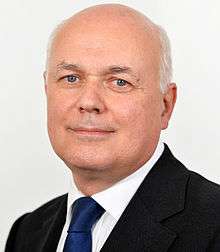 |
|
Chingford and Woodford Green | 13 September 2001 (Elected) |
6 November 2003 | ||
| Michael Howard (1941–) |
 |
|
Folkestone and Hythe | 6 November 2003 (Unopposed) |
6 December 2005 | ||
| David Cameron (1966–) |
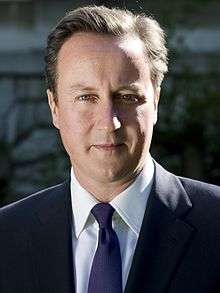 |
Witney | 6 December 2005 (Elected) |
11 July 2016 |
|||
| Brown 2007–10 | |||||||
| himself 2010–16 | |||||||
| Theresa May (1956–) |
.jpg) |
|
Maidenhead | 11 July 2016 (Unopposed) |
Incumbent | herself 2016– | |
House of Lords and Commons leaders
Leaders in the House of Lords, 1834–
Those asterisked were considered the overall leader of the party.
- Arthur Wellesley, 1st Duke of Wellington 1834–1846
- Edward Smith-Stanley, 1st Baron Stanley (14th Earl of Derby from 1851) 9 March 1846 – 27 February 1868* – elected at a party meeting – see below
- James Howard Harris, 3rd Earl of Malmesbury 1868–1869 – appointed by Prime Minister Benjamin Disraeli MP
- Hugh Cairns, 1st Baron Cairns 1869–1870 – elected at a party meeting – see below
- Charles Gordon-Lennox, 6th Duke of Richmond 1870–21 August 1876 – elected at a party meeting – see below
- Benjamin Disraeli, 1st Earl of Beaconsfield 21 August 1876 – 19 April 1881* – became Leader on elevation to the peerage
- Robert Arthur Talbot Gascoyne-Cecil, 3rd Marquess of Salisbury 9 May 1881 – 1902 – elected at a party meeting – see below (overall leader from 1885)
- Spencer Cavendish, 8th Duke of Devonshire 1902–1903 – appointed by Prime Minister Arthur Balfour MP
- Henry Petty-Fitzmaurice, 5th Marquess of Lansdowne 1903–1916 – appointed by Prime Minister Arthur Balfour MP
- George Nathaniel Curzon, 1st Earl Curzon of Kedleston (1st Marquess Curzon of Kedleston from 1921) 1916–1925 – appointed Leader of the House by Prime Minister David Lloyd George MP
- James Gascoyne-Cecil, 4th Marquess of Salisbury 1925–1931 – appointed by Prime Minister Stanley Baldwin MP
- Douglas Hogg, 1st Viscount Hailsham 1931–1935 – took over post 'at the request of Mr Baldwin'[4]
- Charles Vane-Tempest-Stewart, 7th Marquess of Londonderry 1935
- E. F. L. Wood, 3rd Viscount Halifax 1935–1938
- James Stanhope, 7th Earl Stanhope 1938–1940
- Thomas Inskip, 1st Viscount Caldecote 1940
- E. F. L. Wood, 3rd Viscount Halifax 1940
- George Lloyd, 1st Baron Lloyd 1940–1941
- Walter Guinness, 1st Baron Moyne 1941–1942
- Robert Gascoyne-Cecil, Viscount Cranborne (5th Marquess of Salisbury from 1947) 1942–1957
- Alec Douglas-Home, 14th Earl of Home 1957–1960
- Quintin Hogg, 2nd Viscount Hailsham 1960–1963
- Peter Carington, 6th Baron Carrington 1963–1970
- George Jellicoe, 2nd Earl Jellicoe 1970–1973
- David Hennessy, 3rd Baron Windlesham 1973–1974
- Peter Carington, 6th Baron Carrington 1974–1979
- Christopher Soames, Baron Soames 1979–1981
- Janet Young, Baroness Young 1981–1983
- William Whitelaw, 1st Viscount Whitelaw 1983–1988
- John Ganzoni, 2nd Baron Belstead 1988–1990
- David Waddington, Baron Waddington 1990–1992
- John Wakeham, Baron Wakeham 1992–1994
- Robert Gascoyne-Cecil, Viscount Cranborne 1994–1998
- Thomas Galbraith, 2nd Baron Strathclyde 1998–2013
- Jonathan Hill, Baron Hill of Oareford 2013–2014
- Tina Stowell, Baroness Stowell of Beeston 2014–2016
- Natalie Evans, Baroness Evans of Bowes Park 2016–present
Leaders in the House of Commons, 1834–1922
Those asterisked were considered the overall leader of the party.
- Sir Robert Peel 18 December 1834[1]–1846*
- Lord George Bentinck 1846–1847
- Charles Manners, Marquess of Granby 9 February 1848 – 4 March 1848 – elected at a party meeting – see below
- None 1848–1849
- Jointly Benjamin Disraeli, Charles Manners, Marquess of Granby and John Charles Herries 1849–1852[5] – elected at a party meeting – see below
- Benjamin Disraeli 1852–21 August 1876 (overall leader from 27 February 1868)
- Sir Stafford Northcote 21 August 1876 – 24 June 1885 – appointed by Prime Minister the Earl of Beaconsfield
- Sir Michael Hicks Beach 24 June 1885 – 3 August 1886 – appointed by Prime Minister the Marquess of Salisbury
- Lord Randolph Churchill 3 August 1886 – 14 January 1887 – appointed by Prime Minister the Marquess of Salisbury
- William Henry Smith 17 January 1887 – 6 October 1891 – appointed by Prime Minister the Marquess of Salisbury
- Arthur Balfour 1891–13 January 1906[6] – appointed by Prime Minister the Marquess of Salisbury – (overall leader from 1902)
- Joseph Chamberlain 1906
- Arthur Balfour 1906–13 November 1911*
- Andrew Bonar Law 13 November 1911 – 21 March 1921 – elected at a party meeting – see below (overall leader from 1916)
- Austen Chamberlain 21 March 1921 – 23 October 1922 – elected at a party meeting – see below
Elections of Conservative leaders by party meeting
House of Commons
| No. | Date of meeting | Name of leader elected | Category attending meeting | Location of meeting | Chair | Proposer | Seconder | Refs |
|---|---|---|---|---|---|---|---|---|
| 1. | 9 February 1848 | Charles Manners, Marquess of Granby | Protectionist commoners | The residence of George Bankes MP | [7] | |||
| 2. | 1 February 1849 | Benjamin Disraeli, Charles Manners, Marquess of Granby, John Charles Herries | The residence of Edward Smith-Stanley, Baron Stanley of Bickerstaffe | [9] | ||||
| 3. | 13 November 1911 | Andrew Bonar Law | Unionist Members of Parliament | Carlton Club, Pall Mall | Henry Chaplin, senior Privy Councillor on the Unionist benches (appointed 1885) | Walter Long | Austen Chamberlain | [10] |
| 4. | 21 March 1921 | Austen Chamberlain | Unionist Members of Parliament | Carlton Club, Pall Mall | Lord Edmund Talbot, Conservative Chief Whip | Captain Ernest George Pretyman | Sir Edward Coates, 'a back bencher and one of the rank and file' | [11] |
| 5. | 23 October 1922 | Andrew Bonar Law | Unionist peers, MP's and candidates | Hotel Cecil, The Strand | The Marquess Curzon of Kedleston, Leader of the House of Lords | The Marquess Curzon of Kedleston | Stanley Baldwin, 'chosen ... to be the spokesman for the House of Commons' | [12] |
| 6. | 28 May 1923 | Stanley Baldwin | 'Conservative Party' | Hotel Cecil, The Strand | The Marquess Curzon of Kedleston, Leader of the House of Lords | The Earl of Derby | Captain Ernest George Pretyman 'a member of the House of Commons who [had] been a colleague in that House of Mr Bonar Law for something over 25 years' | [13] |
| 7. | 31 May 1937 | Neville Chamberlain | 'peers and M.P.s who receive the Conservative whip, ... prospective candidates who have been adopted by constituency associations, and ... members of the executive committee of the National Union of Conservative and Unionist associations from England and Wales, Scotland and Northern Ireland.' | Caxton Hall, Caxton Street | The Viscount Halifax, Leader of the House of Lords | The Earl of Derby | Winston Churchill (Privy Councillor since 1907) | [14] |
| 8. | 9 October 1940 | Winston Churchill | 'Peers and M.P.s who receive the Conservative whip, ... prospective candidates who have been adopted by constituency associations, and ... members of the Executive Committee of the National Union of Conservative and Unionist Associations from England and Wales, Scotland and Northern Ireland.' | London | The Viscount Halifax, Leader of the House of Lords | The Viscount Halifax | Sir George Courthope 'one of the senior back benchers of the party' | [15] |
| 9. | 21 April 1955 | Sir Anthony Eden | 'Conservative and National Liberal members of the two Houses of Parliament, Conservative and National Liberal parliamentary candidates and members of the executive committee of the National Union of Conservative and Unionist Associations' | Church House, Dean's Yard, Westminster | The Marquess of Salisbury, Leader of the House of Lords | The Marquess of Salisbury | Richard Austen Butler (Privy Councillor since 1939) | [16] |
| 10. | 22 January 1957 | Harold Macmillan | 'Conservative and Unionist members of the House of Lords and the House of Commons, ... prospective parliamentary candidates and ... members of the executive committee of the National Union of Conservative and Unionist Associations. National Liberal members of both Houses of Parliament and adopted prospective candidates were also present' | The Marquess of Salisbury, Leader of the House of Lords | The Marquess of Salisbury | Richard Austen Butler (Privy Councillor since 1939) | [17] | |
| 11. | 11 November 1963 | Sir Alec Douglas-Home | 'members of both Houses of Parliament taking the Conservative whip, prospective candidates who [had] been adopted by constituency associations, members of the executive of the mass party, and National Liberal MP's and adopted prospective candidates' | Church House, Dean's Yard, Westminster | The Lord Carrington, Leader of the House of Lords | The Lord Carrington | Geoffrey Lloyd, 'the senior Conservative Privy Councillor in the Commons next in line to Sir Winston Churchill' (appointed 1943) | [18] |
House of Lords
| No. | Date of meeting | Name of leader elected | Category attending meeting | Location of meeting | Chair | Proposer | Seconder | Notes |
|---|---|---|---|---|---|---|---|---|
| 1. | 9 March 1846 | Edward Smith-Stanley, Baron Stanley of Bickerstaffe | Peers | The residence of Charles Gordon-Lennox, 5th Duke of Richmond | Archibald Montgomerie, 13th Earl of Eglinton | [19] | ||
| 2. | 15 February 1869 | Hugh Cairns, 1st Earl Cairns | 23 peers | James Harris, 3rd Earl of Malmesbury | James Harris, 3rd Earl of Malmesbury | [20] | ||
| 3. | 26 February 1870 | Charles Gordon-Lennox, 6th Duke of Richmond | Peers | The Carlton Club | Robert Gascoyne-Cecil, 3rd Marquess of Salisbury | Edward Stanley, 15th Earl of Derby | [21] | |
| 4. | 9 May 1881 | Robert Gascoyne-Cecil, 3rd Marquess of Salisbury | Conservative members of the House of Lords | The residence of William Nevill, 1st Marquess of Abergavenny | William Nevill, 1st Marquess of Abergavenny | Charles Gordon-Lennox, 6th Duke of Richmond | Hugh Cairns, 1st Earl Cairns | [22] |
See also
Notes
References
- 1 2 Date of the Tamworth Manifesto
- ↑ Date on which Bonar Law became Leader of the House of Commons
- ↑ Date on which he became Leader of the House of Commons
- ↑ The Times, 17 June 1931
- ↑ Granby resigned 'either in the end of December [1851] or on one of the first days of January [1852]': Monypenny, William Flavelle; Buckle, George Earle (1914). The life of Benjamin Disraeli, earl of Beaconsfield, Volume III. New York: The Macmillan Company. pp. 312–3.
- ↑ Date on which he failed to be elected in Manchester East
- ↑ "A Cabinet Council was held at half-past 2 o'clock." Times [London, England] 10 Feb. 1848: 4. The Times Digital Archive. Web. 25 July 2014.
- ↑ Malmesbury, The Right Hon. [James Howard Harris,] the [3rd] Earl of (1885). Memoirs of an Ex-Minister. London: Longmans, Green, and Co. pp. 151–2.
- ↑ Monypenny, William Flavelle; Buckle, George Earle (1914). The life of Benjamin Disraeli, earl of Beaconsfield, Volume III. New York: The Macmillan Company. pp. 138–9.
- ↑ "The Unionist Leadership." Times [London, England] 14 Nov. 1911: 9. The Times Digital Archive. Web. 19 July 2014.
- ↑ "Unionist M.P.s' New Leader." Times [London, England] 22 Mar. 1921: 12. The Times Digital Archive. Web. 19 July 2014.
- ↑ "Unionists Elect Mr. Bonar Law." Times [London, England] 24 Oct. 1922: 18. The Times Digital Archive. Web. 25 July 2014.
- ↑ "Conservative Leader." Times [London, England] 29 May 1923: 19. The Times Digital Archive. Web. 19 July 2014.
- ↑ "The New Leader And The Old." Times [London, England] 1 June 1937: 17+. The Times Digital Archive. Web. 19 July 2014.
- ↑ "Conservative Leader." Times [London, England] 10 Oct. 1940: 2. The Times Digital Archive. Web. 19 July 2014.
- ↑ Our Political Correspondent. "Sir A. Eden as Leader." Times [London, England] 22 Apr. 1955: 12. The Times Digital Archive. Web. 19 July 2014.
- ↑ "Mr. Macmillan states Party philosophy", The Times, London, 23 January 1957
- ↑ Our Political Correspondent. (12 November 1963), "Prime Minister is Ageless", The Times, London, p. 12
- ↑ Malmesbury, The Right Hon. [James Howard Harris,] the [3rd] Earl of (1885). Memoirs of an Ex-Minister. London: Longmans, Green, and Co. p. 124.
- ↑ Malmesbury, The Right Hon. [James Howard Harris,] the [3rd] Earl of (1885). Memoirs of an Ex-Minister. London: Longmans, Green, and Co. p. 645.
- ↑ "We are enabled to state that, in compliance with." Times [London, England] 28 Feb. 1870: 9. The Times Digital Archive. Web. 26 July 2014.
- ↑ "Meeting Of The Conservative Peers." Times [London, England] 10 May 1881: 10. The Times Digital Archive. Web. 25 July 2014.
.jpg)